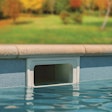

How do you handle your monthly billing? When I first started, I was a post-pay service. I did my work for the month, billed customers at the end of the month and waited for payments to come in.
What I found was that it took six or seven weeks for me to get paid. For example, I would not get paid for October until mid-November — and sometimes longer, depending on the severity of the late payments. I knew I had to make a change.
So I switched to prepay, which is right in line with any power, cable or lawn company that gets paid for a service before they provide it. It's not the end of all your cash flow problems — I still have late payments coming in, even with prepaid service — but it's a lot better.
Which brings me to the issue that bothers so many of my fellow pool service providers: How do you avoid the late payers as much as possible? One way is to set up autopayments. A lot of my customers are automatically billed on the first of each month. This is a huge help because I don't have to worry about late payments from them. Automation helps keep both of us on track.
For customers that aren't on autopayments, I send a service bill on the 15th of every month and set a due date — the first of the following month — for that month of service. Here is an example that I would send out on March 15th:
"Dear Mrs. Jones,
Your bill for pool service for the month of April is due on April 1st. You have until April 15th to pay. If you have not submitted your payment by April 15th, I will not be showing up to service your pool and will not be held liable for an imbalance in water chemistry, algae, etc."
By giving customers two weeks to submit a payment, it eliminates the majority of late bills. While it is good to be flexible, it is not worth being taken advantage of. You're worth more than that.
Erik Taylor is the owner of Chlorine King Pool Services, Seminole, Fla. Go online to check out his successful and entertaining YouTube channel (aqmag.co/chlorineking) and podcast (aqmag.co/chlorinekingpodcast).












































